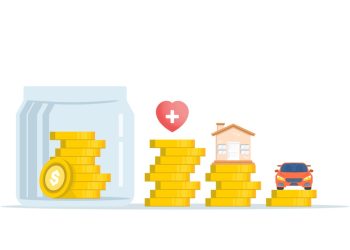 RISMEDIA, February 18, 2011—In today’s challenging economic climate, everyone needs a bigger piece of the pie because the pie itself just isn’t big enough anymore. Everyone is talking about how to get more prospects. I constantly hear agents say, “I need more people in my database,” “I need more friends.” As a result, agents are exhausting much time, money and energy trying to find more friends. But today, we know that one could spend decades trying to convert random prospects into trusting relationships. Especially in the last six years where people have become less trusting and more cynical, and have actually created barriers to prevent people from intruding on their privacy.
RISMEDIA, February 18, 2011—In today’s challenging economic climate, everyone needs a bigger piece of the pie because the pie itself just isn’t big enough anymore. Everyone is talking about how to get more prospects. I constantly hear agents say, “I need more people in my database,” “I need more friends.” As a result, agents are exhausting much time, money and energy trying to find more friends. But today, we know that one could spend decades trying to convert random prospects into trusting relationships. Especially in the last six years where people have become less trusting and more cynical, and have actually created barriers to prevent people from intruding on their privacy.
I actually think a lot of agents feel the same way and, therefore, have stopped prospecting all together. But to me, prospecting and networking are much different than connecting, so what you really need to do is start looking at the Whos in your Whoville. Anyone who has lived in your community—aka, your “Whoville”—for five or more years automatically qualifies as an interested person—aka, a “Who”—that you can build a relationship with.
The fact is, there are different categories of Whos that we have already subconsciously quantified and qualified, not just by level of trust, but by level of importance and expertise in certain subject areas. For example, if I was going on a cruise for the first time, there would be two or three people in my Whoville who I would turn to as “cruise experts.” That’s the whole premise of Whoville—to understand and identify who your Whos are. Let’s pay more attention to who these people are. I’ve broken them down into five groups:
1. Your core group, or your advisors, are those you are closest to who you’ve built strong bonds with and in whom you have ultimate confidence and trust. You communicate frequently with this group on a variety of topics. Most people have somewhere between five and 12 people who fit into this category.
2. The second group is your advocates or raving fans. These are people who have a connection with you and who have an already-established list of experience. Perhaps you share responsibility with them in a social environment or through your kids’ activities. You are proactive through the connection process with this group, but not as frequently as with your core group.
3. Friends or allies are people who you know, like and trust. You have a feeling they are also knowledgeable, but you are less inclined to go to them. There’s always a little bit of reluctance because you’re not sure they’d be anxious to help you and you don’t want to overstep your boundary—you don’t want to be too pushy. By spending more time with this group, however, they could easily become raving fans.
4. Acquaintances or neighbors are people we recognize, may or may not know their first name, but we do know their last name. We see them once or twice a year at certain functions but we are not seeking them out as an opportunity or to help them with a need or concern.
5. The last group would be acquaintances we think we know. We may not know them by name, but we know who they are. You might recognize them at the salon when they’re getting their nails done, but you wouldn’t sit down next to them and start chatting.
Once you’ve segmented your Whos, the key is to come up with a system and a strategy to leverage those relationships in Whoville, thereby getting more people to be proactive advocates, which will then lead us to some of the upper levels of their Whovilles. As a consequence, we can end up with more business than we can handle. Where we fall down is not having systematized the people who live in our Whoville.
That said, here are the 10 Rs of taking care of your Whoville:
1. Research. Constantly stay in tune with what’s happening on a local level. You are the local ambassador for your community and neighborhood.
2. Recognize and prioritize the people in Whoville. Know what is important to them; what are their areas of significance? If they have children in elementary school, then know what’s going on in the school system. If they’re retired, then know about tax issues or who to call if a streetlight needs to be fixed.
3. Reach out. Elevate their level of awareness of you by reaching out to them with something that reminds them that you are available.
4. Remind them that you are able to assist them.
5. Review again what their needs are to see if their passions have migrated into an area you can offer help on. Maybe they’re planning a trip to Greece and you just came across an article you can send them.
6. Respond. Make sure you are proactive in responding to them and make sure you are reminding them that you are happy to help other friends, relatives and neighbors with any questions they may have.
7. Reward them by being a good listener and providing them with information that is relevant to their needs.
8. Refer them to people that you are highly confident will be able to take care of their needs.
9. Rework them to make sure that after you have handed them off to a referral, that individual has succeeded and your Who is satisfied.
10. If not, do what needs to be done to rectify the situation. Reconnect with them by reaching out with relevant information.
A tool like Facebook is the perfect way to proceed on the 10 R’s of Whoville and make sure you’re connecting effectively and building relationships with all the Whos in your community. After all, if you’re not the REALTOR® of Whoville, who is?
George “Gee” Dunsten, president of Gee Dunsten Seminars, Inc., has been a real estate agent and broker/owner for almost 40 years. Dunsten has been a senior instructor with the Council of Residential Specialists for more than 20 years. To reach Gee, please e-mail, gee@gee-dunsten.com.










